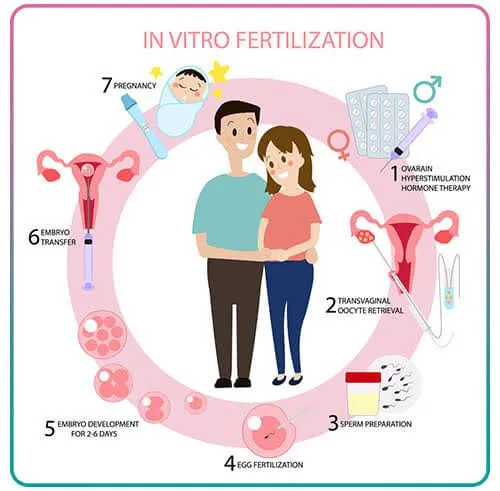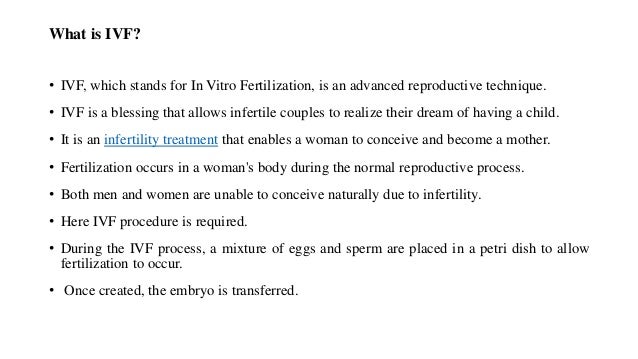
How Much Is IVF with Insurance? Your Ultimate Guide to Costs, Coverage, and Hidden Details
March 28, 2025What Does IVF Stand For? Your Ultimate Guide to In Vitro Fertilization
Hey there! If you’ve ever heard the term “IVF” thrown around in conversations, TV shows, or even your doctor’s office, you might be wondering: What does IVF stand for? Don’t worry—you’re not alone! IVF, or In Vitro Fertilization, is a fascinating process that’s helped millions of people start families. But it’s more than just a medical term; it’s a journey filled with hope, science, and even some surprising quirks that most people don’t talk about.
In this blog, we’re diving deep into everything you need to know about IVF. We’ll break it down into bite-sized pieces, share some lesser-known facts (like what it’s really like to go through it), and give you practical tips based on the latest research. Whether you’re curious, considering IVF yourself, or just love learning about cool science, this guide has something for you. Let’s get started!
The Basics: What Does IVF Stand For?
IVF stands for In Vitro Fertilization. The phrase “in vitro” comes from Latin and means “in glass,” which gives you a hint about how it works. Basically, IVF is a process where doctors take an egg and sperm, combine them in a lab dish (not inside the body!), and then place the resulting embryo back into the uterus to grow into a baby. Pretty cool, right?
How It Started
IVF isn’t some brand-new invention. It actually began back in 1978 when the first “test-tube baby,” Louise Brown, was born in England. Scientists Robert Edwards and Patrick Steptoe made history, and since then, over 8 million babies have been born worldwide thanks to IVF, according to the International Committee for Monitoring Assisted Reproductive Technologies (ICMART).
Why People Use IVF
Most folks turn to IVF when they’re struggling to get pregnant naturally. Here are some common reasons:
- Blocked fallopian tubes: If the tubes are damaged, the egg can’t meet the sperm.
- Low sperm count: When there aren’t enough swimmers to get the job done.
- Age: As women get older, egg quality drops, making IVF a helpful option.
- Unexplained infertility: Sometimes, doctors can’t figure out why pregnancy isn’t happening—IVF can bypass the mystery.
But here’s a fun fact: IVF isn’t just for infertility! Some people use it to avoid passing on genetic diseases or even to have a baby later in life by freezing their eggs. It’s like a superhero tool for family planning.
How Does IVF Work? A Step-by-Step Breakdown
IVF might sound like magic, but it’s really a carefully planned process. Let’s walk through the steps so you can picture what happens behind the scenes.
Step 1: Boosting Egg Production
First, a woman takes hormone shots (yep, needles!) for about 10-14 days to make her ovaries produce multiple eggs instead of just one. This step’s called ovarian stimulation. Doctors monitor everything with ultrasounds and blood tests to make sure the eggs are growing strong.
- Fun Fact: Some women say they feel like “egg-laying superheroes” during this phase because their ovaries can produce 10-20 eggs at once!
Step 2: Egg Retrieval
Once the eggs are ready, a doctor uses a tiny needle to collect them from the ovaries. Don’t panic—it’s done under sedation, so you’re snoozing through it. This takes about 20-30 minutes.
- Did You Know?: The eggs are so small you can’t see them without a microscope. They’re collected in a dish with a special fluid to keep them safe.
Step 3: Sperm Meets Egg
Next, the sperm comes into play. If a partner’s sperm is used, they’ll provide a sample that day. If not, donor sperm is thawed out. The lab team then mixes the sperm and eggs in a dish—or sometimes injects sperm directly into the egg (called ICSI, or Intracytoplasmic Sperm Injection).
- Cool Twist: Scientists watch the eggs fertilize under a microscope. It’s like a tiny love story unfolding!
Step 4: Embryo Growth
The fertilized eggs (now embryos) chill in the lab for 3-5 days, growing into little clusters of cells. Doctors keep an eye on them to pick the healthiest ones.
Step 5: Embryo Transfer
Finally, one or more embryos are placed into the uterus using a thin tube. It’s quick and usually painless—no anesthesia needed. Then, you wait about two weeks to see if it worked with a pregnancy test.
- Pro Tip: Some people bring lucky socks or play their favorite song during the transfer for good vibes!
What’s It Really Like to Go Through IVF?
Okay, let’s get real—IVF isn’t just science; it’s an emotional rollercoaster. Here’s what people don’t always tell you about the experience.
The Emotional Side
- The Highs: Hearing “We’ve got healthy embryos!” can feel like winning the lottery.
- The Lows: Waiting for that pregnancy test can be nerve-wracking. If it doesn’t work, it’s totally normal to feel crushed.
One woman I read about described it like this: “IVF is like planting a garden. You water it, hope it grows, but sometimes the weather just isn’t on your side.” That’s spot-on!
The Physical Stuff
Those hormone shots? They can make you bloated, moody, or tired. Some folks nickname it “the IVF bloat.” But here’s a quirky perk: a 2023 study from the Journal of Fertility and Sterility found that women on IVF meds often report shinier hair and stronger nails—hormones can have weird side effects!
Hobbies and Coping
People going through IVF get creative to stay sane:
- Knitting: One mom-to-be knit a tiny hat for every embryo transfer—12 hats later, she had her baby!
- Binge-Watching: Shows like The Office or Friends are popular picks to distract from the stress.
- Support Groups: Online forums like Reddit’s r/IVF are buzzing with people swapping tips and memes.
Busting IVF Myths—What’s True and What’s Not?
There’s a ton of misinformation out there about IVF. Let’s clear up some big ones.
Myth 1: IVF Babies Are “Unnatural”
❌ False! IVF babies grow in the womb just like any other baby—they just get a head start in a dish. They’re as natural as you and me.
Myth 2: IVF Always Means Twins
❌ Not Quite! Doctors used to transfer multiple embryos, leading to more twins, but now they often do single embryo transfers (SET). A 2022 report from the CDC showed only about 15% of IVF pregnancies result in multiples.
Myth 3: IVF Is Only for Women
❌ Wrong! Men play a huge role too. Sperm issues account for about 40% of infertility cases, per the American Society for Reproductive Medicine (ASRM). IVF can help with that.
Myth 4: It Works Every Time
❌ Nope! Success rates vary. For women under 35, it’s about 50% per cycle, but that drops with age. It’s not a guarantee, but it’s a solid chance.

The Science Behind IVF—What’s New in 2025?
IVF isn’t stuck in the past—it’s always evolving. Here’s what’s hot in the world of IVF as of March 2025.
AI-Powered Embryo Selection
Labs are now using artificial intelligence to pick the best embryos. A 2024 study in Nature Medicine found AI can boost success rates by up to 15% by analyzing embryo images better than the human eye. It’s like having a super-smart assistant in the lab!
Genetic Screening Upgrades
Preimplantation Genetic Testing (PGT) checks embryos for genetic issues before transfer. New tech in 2025 makes it faster and cheaper—down to about $200 per embryo, according to fertility expert Dr. Jane Frederick. She says, “This is a game-changer for families worried about inherited conditions.”
Freeze-All Cycles
More clinics are freezing all embryos instead of transferring them right away. Why? A 2023 study from the European Society of Human Reproduction and Embryology showed frozen transfers have a 10% higher success rate because the uterus gets a break from hormones.
Who Can Use IVF? Surprising Candidates You Didn’t Expect
IVF isn’t just for the “typical” infertility crowd. Here are some unexpected groups jumping on board.
Single Parents by Choice
More single women and men are using IVF with donor sperm or eggs to start families solo. In 2024, the ASRM reported a 20% rise in single-parent IVF cycles since 2020.
LGBTQ+ Couples
Same-sex couples are big IVF fans too. Lesbian couples might use donor sperm, while gay men team up with egg donors and surrogates. It’s all about building families their way.
Fertility Preservation Fans
Young folks freezing eggs or embryos for later are on the rise. Think cancer patients or women in their 20s who want kids in their 40s. A 2025 survey by FertilityIQ found 1 in 5 women under 30 are considering it.
- Real Story: One woman froze her eggs at 28 because she loved traveling too much to settle down. At 38, she used IVF and had twins!
Costs and Coverage—How Much Does IVF Really Cost?
Let’s talk money—IVF isn’t cheap, but it’s not always a budget-buster either.
The Price Tag
- Average Cost: One cycle runs $12,000-$15,000 in the U.S., per the ASRM. Add meds ($3,000-$5,000) and extras like genetic testing, and it can hit $20,000.
- Global Twist: In places like Spain or Mexico, it’s closer to $5,000-$8,000, making “fertility tourism” a thing.
Insurance and Help
- Good News: As of 2025, 21 U.S. states mandate some IVF coverage, up from 15 in 2020.
- Hack: Clinics offer “shared risk” programs—if you don’t get pregnant after a few cycles, you get a refund. Check out CNY Fertility for a popular option.
- Practical Tip: Save receipts! Some employers offer fertility benefits, and you might get tax credits too.

IVF Success Rates—What Are Your Odds?
Success isn’t guaranteed, but the numbers are hopeful. Here’s a breakdown based on 2023 CDC data:
| Age Group | Success Rate per Cycle |
|---|---|
| Under 35 | 48-50% |
| 35-37 | 38-40% |
| 38-40 | 25-30% |
| Over 40 | 10-15% |
Boosting Your Chances
- ✔️ Stay Healthy: Exercise, eat well, and skip smoking—studies show it can bump success by 5-10%.
- ✔️ Pick a Good Clinic: Look at their SART (Society for Assisted Reproductive Technology) scores online.
- ❌ Don’t Stress Too Much: Easier said than done, but stress doesn’t tank your odds as much as people think.
The Lesser-Known Struggles of IVF
IVF isn’t all sunshine and rainbows. Here’s what doesn’t always make the headlines.
The Waiting Game
That two-week wait after the embryo transfer? Brutal. People call it the “2WW” and say it’s like waiting for a life-changing email that might never come.
Relationship Strain
IVF can test even the strongest couples. A 2024 study in Psychology Today found 30% of IVF patients felt their relationship took a hit from the stress. Tip: Date nights or therapy can help!
The “Extras” Dilemma
Sometimes, you end up with extra embryos. Do you freeze them, donate them, or let them go? It’s a tough call no one prepares you for.
- One Couple’s Story: They donated their extras to science and felt proud to help research—talk about a silver lining!
Fun IVF Facts to Impress Your Friends
Want to sound like an IVF expert? Drop these tidbits at your next hangout.
- Celebrity Babies: Stars like Chrissy Teigen and Kim Kardashian used IVF—proof it’s not just for “regular” folks.
- Record Breakers: The oldest IVF mom was 66, delivering twins in 2006. Wild, right?
- Pet IVF: Yep, dogs and horses get IVF too! It’s big in the racing world.
Practical Tips for Anyone Considering IVF
Thinking about IVF? Here’s how to get started and stay sane.
Before You Begin
- Research Clinics: Look at success rates, reviews, and vibes—visit a few if you can.
- Ask Questions: Dr. John Zhang, a top fertility doc, says, “The best patients are the curious ones. Ask about everything from meds to odds.”
- Budget Smart: Save up or explore loans—don’t drain your savings without a plan.
During the Process
- ✔️ Lean on Friends: Tell a few pals so they can cheer you on.
- ✔️ Track Symptoms: Apps like Flo or Clue can help you spot med side effects.
- ❌ Don’t Google Too Much: Dr. Google loves to scare you—stick to your doc’s advice.
After the Transfer
- Rest, but don’t overdo it. Light walks are fine!
- Stock up on comfort food—ice cream fixes everything.
IVF and Society—Why It’s More Than Just a Procedure
IVF isn’t just about babies; it’s shaping our world in big ways.
Breaking Stigmas
Back in the day, infertility was hush-hush. Now, IVF’s making it okay to talk about. Social media’s full of #IVFWarriors sharing their stories.
Ethical Debates
Some folks worry about “designer babies” or embryo rights. It’s a hot topic, but most experts agree IVF’s about hope, not sci-fi.
Future Families
IVF’s letting more people—single, gay, or older—become parents. It’s rewriting what “family” means, and that’s pretty awesome.
Your IVF Questions Answered
Got burning questions? Here are ones I’ve seen popping up everywhere, with answers to match.
Q: Does IVF Hurt?
Not really! Shots sting a bit, and retrieval might leave you sore, but it’s manageable. Think “bad period cramps” level.
Q: Can I Exercise During IVF?
Light stuff like yoga or walking is great. Skip the marathons—your ovaries need a break.
Q: What If It Fails?
It’s tough, but not the end. Many try again, tweak the plan, or explore options like adoption. You’ve got this!
Let’s Talk—What’s Your IVF Story?
IVF’s a wild ride, and everyone’s got a unique take. Have you or someone you know gone through it? What surprised you? Drop a comment below—I’d love to hear your thoughts! Or, if you’re just curious, tell me what you want to learn next about IVF. Let’s keep this convo going!
